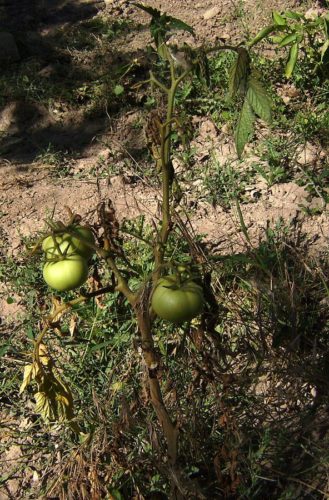Fusarium wilt is a soil-borne fungal disease that occurs worldwide and causes a lot of damage to i.e. crops.
Also known as:
Bas
Bulb rot (tulip)

Fusarium wilt (Fusarium oxysporum) is a soil-borne fungal disease that occurs worldwide and causes much damage to plants, animals and humans. The fungus disrupts water balance in plants, causing the crop to wilt.
The disease symptoms are similar to those of the fungus Verticillium, which also causes wilting
Plants yellowing, collapse because the stems are affected and die fairly quickly. Fungus develops on the stem. Fusarium oxysporum is highly contagious. Plants are generally affected by a proprietary “strain” of the fungus; so other plants get not affected.
Fusarium oxysporum is very common in the soil; however, most species live as saprophytes (a harmless fungus that feeds on dead organic matter). Unfortunately, there are also a large number of pathogenic strains, which can infect various plants. Infection usually occurs through the roots. The vessels become blocked by the growing fungus causing the sap flow to stop. In addition, the fungus produces toxins that enter the remaining sap stream.
Fusarium wilt develops particularly during warm and humid weather. Usually plants in the garden become infected through infected seeds, cuttings and young plants. The spores of the fungus can remain active in the soil for years.
Where to find
Vegetable plot and ornamental garden
Control
Fusarium wilt cannot be controlled; infested plants should be removed as soon as possible to prevent infestation of other plants.
Prevention
Provide clean and sanitized tools. Disinfect the greenhouse thoroughly after an infestation by Fusarium oxysporum and replace the soil. Buy disease-free plant material and do not use water that may be contaminated.
Leave fungus infested soil fallow for four to five years, or replace it with fresh soil.
